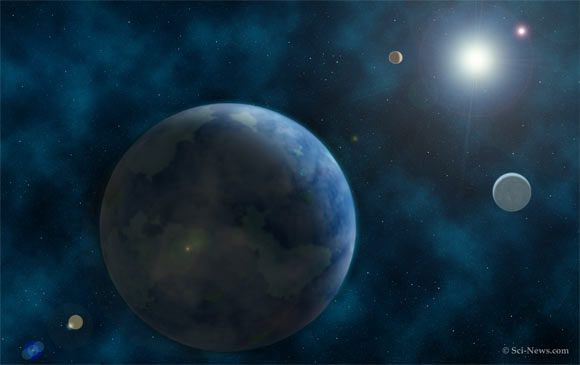The orbital planes of the newly discovered planets are nearly perpendicular to each other, as 2 out of the 3 have chosen to travel from one pole to the other of their parent star.
The intriguing worlds named HD 3167b, HD 3167c, and HD 3167d orbit a bright K0-type star, located 149 light-years away from us in the constellation Pisces.
According to a research team led by the University of Geneva Observatory in Switzerland, planet HD 3167b is a super-Earth, meaning it is a rocky planet but larger than our Earth, while HD 3167c is a “mini Neptune”, which is a gas planet. The planetary form of HD 3167d has yet to be determined.

Graphic representation of the most unusual “solar system” in the universe – (Image: Sci-News)
The most peculiar aspect is that the orbital planes of the planets are nearly perpendicular to each other (forming an angle of 102.3 degrees).
Typically, in a star system, including our Solar System, planets form from a protoplanetary disk aligned with the equatorial plane of the parent star, resulting in similar orbital planes.
In this star system, HD 3167b orbits in the correct region around the orbital plane, while HD 3167c and HD 3167d have chosen to “wander” back and forth between the two poles of their parent star.
HD 3167b orbits its parent star with a super-short period of 0.96 days per orbit; HD 3167c takes 29.84 days per orbit. HD 3167d actually has an orbit situated between the two planets, taking 8.51 days per orbit but was discovered later, hence named afterward.
According to Sci-News, Dr. Vincent Bourrier, the lead author of the study, noted the phenomenon of the uneven orbital planes.
















































